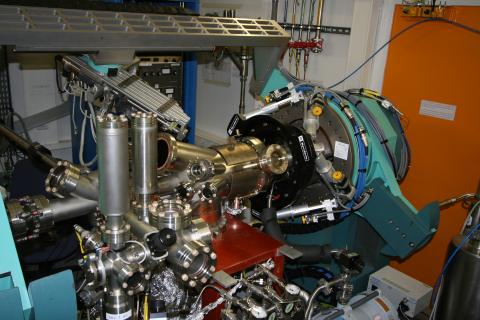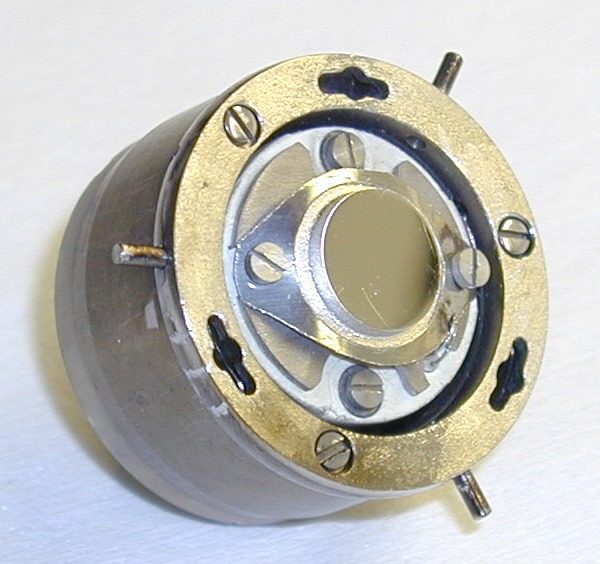- Home
- Experimental Hutch 2 - EH2
Experimental Hutch 2 - EH2
Description of experimental hutch 2
EH2 Photos
EH2 Diffractometer with UHV Chamber and Sample Transfer Chamber
Transfer Chamber View

Sample hexapod view
Description
The second experimental station (EH2) is housing a horizontal geometry z-axis diffractometer with a UHV chamber (main chamber) for in-situ surface preparation and growth, surface magneto-optic Kerr effect (SMOKE) and Auger Electron Spectroscopy (AES) capabilities. The UHV conditions are guaranteed by turbo-molecular and titanium sublimation pumps.
The chamber is equipped with:
- Retractable Cylindrical Mirror Analyser (PHI-Perkin Elmer CMA) for Auger Electron Spectroscopy.
- One ion-guns (SPECS) for sample cleaning purposes.
- Possible to install up to three evaporators simultaneously, either electron bombardment evaporators or Knudsen cells. There are several Omicron electron beam evaporators for different materials available at the beamline.
- Load-lock and sample transfer chamber with possibilities to park up to three sample-holders to avoid breaking the vacuum on the main chamber when changing samples during an experiment.
- Sample holders for a wide temperature range: the sample is mounted on top of a heater plate (boralectric heater) and attached with Ta or Mo clips. The sample temperature is measured through a K-type thermocouple (Chromel/Alumel) welded to the clip or directly to the sample (when possible). In standard experiments with the boralectric heater, it is possible to anneal the sample up to temperatures of about 1400K.

ID03 in vacuum sample-holder
- Three sample rods depending on the temperature range needed:
- Room temperature rod (RT-rod) for a temperature range of 300-1400K
- Low temperature rod (LT-rod) for a temperature range of 180-1400K, using liquid nitrogen. This rod is equipped with a cryostat from Oxford Instruments.
- Very low temperature rod (Very_LT-rod) for a temperature range of 4.8-1400K when using liquid He and fixed configuration. This rod is a design of L.Petit and Oxford Instruments.
- Gas-line with two different gases installed permanently: argon and oxygen. A third inlet for another optional gas (mainly hydrogen or carbon monoxide). Gases introduction into the main-chamber is done through three independent UHV leak-valves.
- Residual Gas Analyser (RGA) to check the gas quality and vacuum conditions in the main chamber.
- Magneto-optical Kerr effect (MOKE) setup used to study the magnetic properties of layered systems, surfaces or nanostructures.
A KB mirror system (KB2) is installed before the main chamber to focus the photon beam down to the micron range.
To align the sample on the beam position we have a precise sample hexapod.



